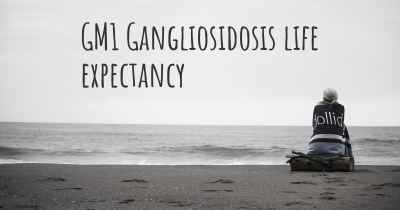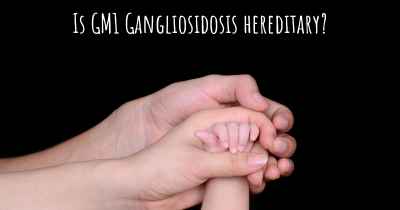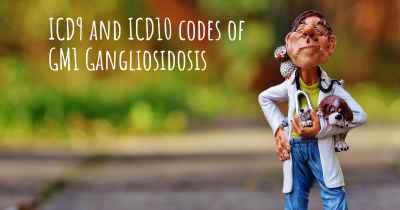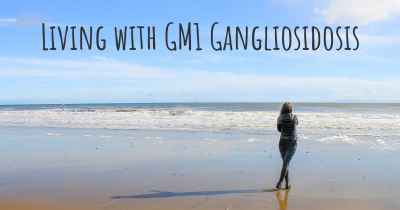Which are the causes of GM1 Gangliosidosis?
See some of the causes of GM1 Gangliosidosis according to people who have experience in GM1 Gangliosidosis
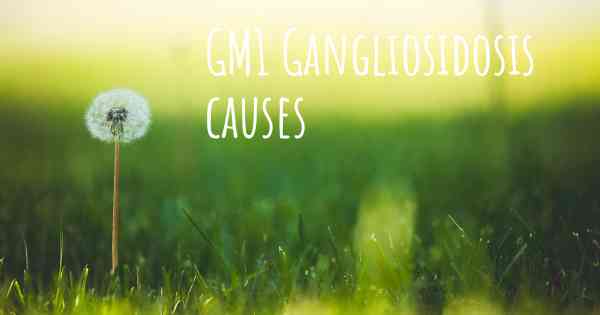
GM1 Gangliosidosis:
GM1 Gangliosidosis is a rare genetic disorder that affects the nervous system. It is caused by a deficiency of an enzyme called beta-galactosidase, which is responsible for breaking down a fatty substance called GM1 ganglioside. This deficiency leads to the accumulation of GM1 ganglioside in various tissues and organs, particularly in the brain.
Causes:
GM1 Gangliosidosis is an autosomal recessive disorder, which means that both parents must carry a mutated gene in order for their child to develop the condition. The specific gene associated with GM1 Gangliosidosis is called GLB1, and mutations in this gene result in a deficiency of beta-galactosidase enzyme activity.
Genetic Mutations:
The GLB1 gene provides instructions for producing the beta-galactosidase enzyme. Mutations in this gene can disrupt the normal production or function of the enzyme, leading to a deficiency. These mutations can occur in different regions of the gene and can vary in severity, resulting in different forms of GM1 Gangliosidosis.
Types of GM1 Gangliosidosis:
There are three main types of GM1 Gangliosidosis, classified based on the age of onset and the severity of symptoms:
- Infantile Form: This is the most common and severe form of GM1 Gangliosidosis. Symptoms typically appear within the first few months of life. Infants with this form may experience developmental delays, muscle weakness, seizures, and an enlarged liver and spleen. They may also have distinctive facial features, such as a large head and a prominent forehead.
- Juvenile Form: This form of GM1 Gangliosidosis usually begins in early childhood, between the ages of 3 and 10. Symptoms may include muscle stiffness, difficulty walking, speech problems, and cognitive decline. Children with the juvenile form may also develop seizures and experience a decline in intellectual abilities.
- Adult Form: The adult form of GM1 Gangliosidosis is the mildest and rarest form. Symptoms typically appear in late adolescence or early adulthood. Individuals with this form may experience muscle weakness, difficulty coordinating movements, and cognitive impairment. They may also develop psychiatric symptoms, such as depression and anxiety.
Pathophysiology:
The accumulation of GM1 ganglioside in the cells of various tissues and organs, particularly in the brain, is the underlying cause of the symptoms seen in GM1 Gangliosidosis. GM1 ganglioside is a type of lipid molecule that plays a role in cell membranes and cell signaling.
In individuals with GM1 Gangliosidosis, the deficiency of beta-galactosidase enzyme activity prevents the normal breakdown of GM1 ganglioside. As a result, GM1 ganglioside accumulates within the lysosomes, which are cellular compartments responsible for breaking down various substances. The accumulation of GM1 ganglioside disrupts normal cellular function and leads to the progressive damage of tissues and organs, particularly in the brain and nervous system.
Symptoms:
The symptoms of GM1 Gangliosidosis can vary widely depending on the type and severity of the condition. Common symptoms include:
- Developmental delays
- Muscle weakness and stiffness
- Seizures
- Enlarged liver and spleen
- Distinctive facial features
- Difficulty walking and coordinating movements
- Speech problems
- Cognitive decline and intellectual impairment
- Psychiatric symptoms (in adult form)
Diagnosis:
Diagnosing GM1 Gangliosidosis typically involves a combination of clinical evaluation, genetic testing, and specialized laboratory tests. The presence of characteristic symptoms, such as developmental delays and an enlarged liver and spleen, may raise suspicion of the condition.
Genetic testing can identify mutations in the GLB1 gene, confirming the diagnosis of GM1 Gangliosidosis. Additionally, specialized laboratory tests can measure the activity of beta-galactosidase enzyme in blood or other tissues, helping to assess the severity of the deficiency.
Treatment:
Currently, there is no cure for GM1 Gangliosidosis. Treatment primarily focuses on managing the symptoms and providing supportive care to improve the individual's quality of life. This may involve a multidisciplinary approach, including physical therapy, occupational therapy, speech therapy, and medications to manage seizures or other symptoms.
Research is ongoing to explore potential treatment options, such as enzyme replacement therapy and gene therapy, which aim to address the underlying enzyme deficiency. These approaches show promise in preclinical studies and may offer hope for future therapeutic interventions.
